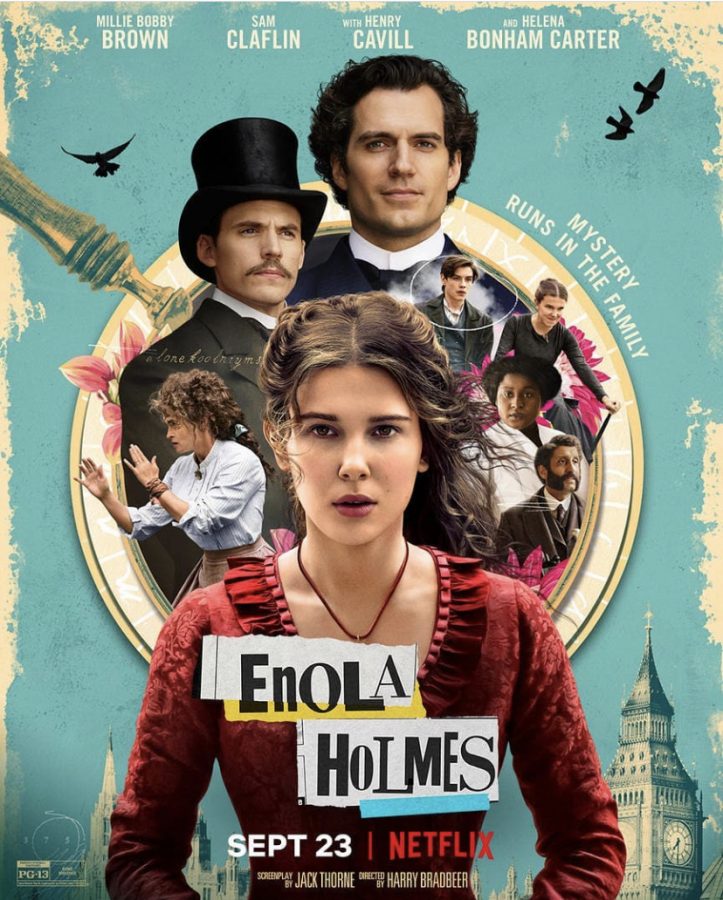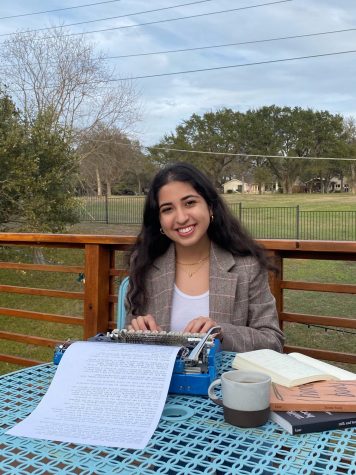‘Enola Holmes’: Historical Heroine Presents Feminist Commentary Applicable to Present Day
@milliebobbybrown
The highly anticipated Netflix film ‘Enola Holmes’ premiered on Sept.23 with positive fan and critic reviews resounding at its gorgeous scenes and powerful storyline. Photo courtesy of @milliebobbybrown
October 2, 2020
Enola Holmes is forming her own identity and forging her own path, one lined with cleverness and bravery. The Holmes name we so often synonymize with Sherlock produced more than one witty detective, and her ingenuity and grit needs not to be compared. Outmatching her esteemed brother, Enola’s intuition stands alone and shouldn’t be paralleled to the detective we all know so well. She should be recognized as her own main character, disintegrating gender stereotypes one bright phrase and martial arts move at a time. The film, Enola Holmes released on Sept. 23 on Netflix, enthralled me with its cinematically breathtaking scenes and thematically exhilarated me with its compelling strong female plot line as well as its spectacular detective sleuthing. Stranger Things star Millie Bobby Brown plays the titular character with a brilliant cast including acclaimed actors Henry Cavill, Sam Claflin, Helena Bonham Carter, as well as relative newcomer Louis Partridge.
Solving ciphers and codes to solve the mystery of her beloved mother’s disappearance, Enola sends out on her own, breaking free from her controlling and close-minded brother Mycroft and like-minded and clever but socially distant brother, famed detective Sherlock. On her journey she makes acquaintance with someone who she ultimately grows closer to and repeatedly ends up saving from their impending doom. Her mental prowess, attentiveness, and martial arts proficiency make her an apt and ideal heroine, solving a case with a concise focus on detail and attention triumphing her critically acclaimed and widely recognized older brother. Though the case is not what she ultimately set out to solve, it brings deeper meaning to her journey.
Throughout the film, Enola’s strong, empowered nature, and unwavering intellect, traits largely scrutinized in young women in English society in the late 19th century are highly prominent and put in center focus. Her obvious straying from society’s norms can be seen in scenes where she exemplifies that she doesn’t mind others looking at her as if she’s strange for going against society’s ideal of a proper and dignified woman. With threads of the growing suffrage movement interwoven throughout the film, Enola bears witness to the fervor of the intensifying surge of demonstrators for women’s rights and the means by which the movement aims to gain the vote, including her own mother’s involvement. By analyzing and discovering hidden codes and meanings, she not only strengthens her own determined character but learns new things about her mother. On her journey, she faces foe in many various individuals, including her brother Mycroft who disapproves their mother’s upbringing of Enola to be a intelligent, well read, mentally and physically tough woman, something he feels is incompatible with the life she needs to live as a gentle mannered wife who lacks strong opinions.
One scene that particularly stood out to me was when Enola who usually avoided conforming to the societal fashions, dressed in the day’s London style in order to fit in on her quest to find her mother. She opts to wear a whale-bone corset, a style staple at the time and finds its restricting nature bothersome and like a cage. She remarks that the corset is “a symbol of repression, to those who are forced to wear it,” but uses it as a means to hide the money given to her by her mother and it’s structured protection later aids her in a rather unlikely way. This very insightful point paired with various instances of sexism portrayed throughout the film illustrate the undermining of women as the incribers and instigators of their own histories and show that the fight for equality remains, varied yet still present in today’s society. Equality is a notion to be achieved through what methods can be applied, in the face of darkness, we create our own light. The inventive storyline added greatly to the overall film, with twists and turns that strayed from the generic plotline some films of this genre can often possess with redundant themes and character stereotypes. Her defiance of the gender norms of the time is critical and presents the overarching theme of the film. Another critical theme of the film is love, in all the forms it presents itself. Scenes of Enola with her mother are tinged in bright golden tones, depicting the happiness of their time together. In addition, independence does not translate directly to loneliness, and true love makes sacrifices for the well being and development of others. Physical distance does not fragment true bonds and pure love and at times, people’s motivations are not what they seem. These and other integral messages of this film will reverberate in your ears, and inspire you long after you conclude your viewing’s experience.
The storytelling is marvelously woven and keeps you clinging to every word of the dialogues, as scenes fit together like fragments of broken glass to form the complete story, in clarity. With the tear-inducing and thought-provoking commentaries on women’s rights and suffrage struggles in the latter half of 1800s England, this film provides wonderful social commentary and a gorgeously detailed story with adventurous zeal that will entrance audiences young and old alike.



